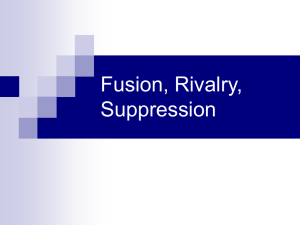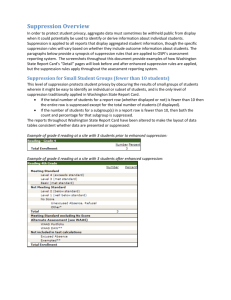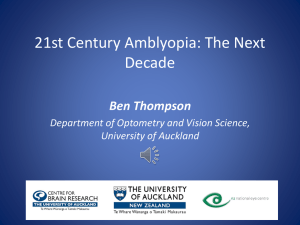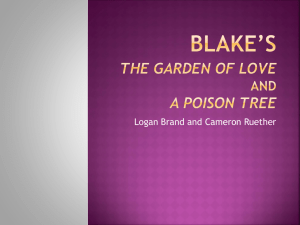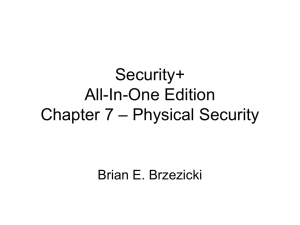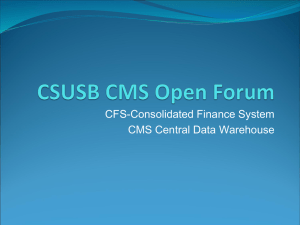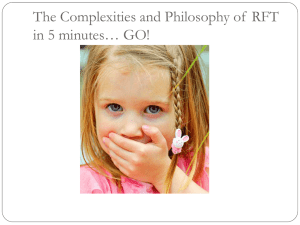slides (part 2) - Gestalt ReVision
advertisement
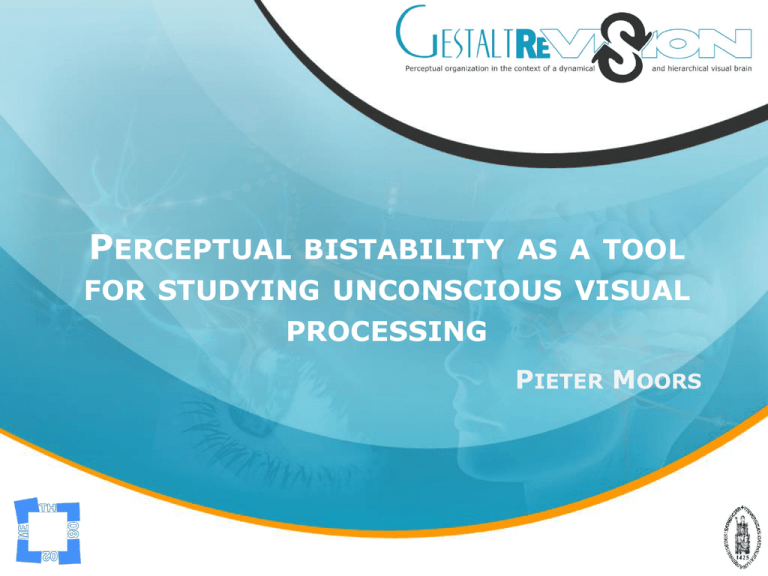
PERCEPTUAL BISTABILITY AS A TOOL FOR STUDYING UNCONSCIOUS VISUAL PROCESSING PIETER MOORS Perceptual bistability • Despite constant retinal input, perceptual experience changes continuously • The processing of the suppressed stimulus can give insight into the neural correlates of visual awareness. Paradigms • Motion-induced blindness Paradigms • Motion-induced blindness • Binocular rivalry and continuous flash suppression – See also the session on binocular rivalry Paradigms • Motion-induced blindness • Binocular rivalry and continuous flash suppression – See also the session on binocular rivalry • (Visual masking, inattentional blindness, change blindness, visual crowding, attentional blink, object substitution masking, …) Measures • Adaptation to the suppressed stimulus • Priming by the suppressed stimulus • Dominance/suppression durations • Breaking suppression (CFS) Overview • Discuss findings on “low-level”, “midlevel”, and “high-level” aspects of suppressed stimuli • End with discussion on the convergence and divergence between these findings “Low-level” features • The representation of very simple features seems to be preserved during suppression – Orientation (Blake & Fox, 1974; Blake et al., 2005; Montaser-Kouhsari et al., 2004; Moradi & Koch, 2005, …) – Spatial frequency – Color (Yang & Blake, 2012, …) (Hofstoetter et al., 2004, Hong & Blake, 2009) – Motion (Lehmkuhle & Fox, 1975; O’Shea & Crassini, 1981, …) “Mid-level” features • Gestalt grouping cues can influence dominance durations in – MIB (Bonneh et al., 2001; Mitroff & Scholl, 2005) Bonneh et al. (2001) Mitroff & Scholl (2005) “Mid-level” features • Gestalt grouping cues can influence dominance durations in – MIB (Bonneh et al., 2001; Mitroff & Scholl, 2005) – Binocular rivalry (Alais & Blake, 1999) • Common fate • Parallelism • Good continuation “Mid-level” features • Mixed evidence for more complex Gestalts – E.g., Kanizsa stimulus • Yes: Masking (Poscoliero et al., 2013); CFS (Wang et al., 2013) • No: BR (Sobel & Blake, 2003), CFS (Harris et al., 2011) Poscolieri et al. (2013) Wang et al. (2012) Sobel & Blake (2003) Harris et al. (2011) Moors et al. (in prep.) • Divergence between direct and indirect measures in rivalry and CFS. • Collinear contours of the pacmen could still drive the effect Moors et al. (in prep.) • Collinear contours of the pacmen could still drive the effect • Extracting the surface is critical for the illusion • Goal: Replicate effect from Wang et al. (2012) and use control stimuli for surface and collinear contours • Stimulus set Kanizsa Regular Irregular Surface Cross • b-CFS experiment Non dominant eye Dominant eye • Results N = 20 Main effect Stimulus and Regularity (BF = 48) “High-level” features • Faces – Adaptation in CFS • Face shape only (Stein & Sterzer, 2011) • Not identity (Moradi & Koch, 2005) • Not gender or race (Amihai et al., 2011) – b-CFS findings • Inversion effects (Jiang et al., 2007) • Familiarity effects (Gobbini et al., 2013) “High-level” features • Emotional faces – Adaptation to emotional expressions (Adams et al., 2010) – Fearful faces break suppression faster (Yang et al., 2007) • Potential spatial frequency confound? (Stein & Sterzer, 2011; Gray et al., 2013) “High-level” features • Semantic processing – In CFS • Scene congruency biases suppression (Mudrik et al., 2010, 2011) • For word stimuli – Prime – target congruency (Costello et al., 2009) – Emotional vs. neutral words (Yang & Yeh, 2011; Sklar et al., 2012) “High-level” features • Semantic processing – No study addressed whether words per se break suppression faster than pseudo/nonwords – If words are processed, a word frequency effect is expected to be observed Heyman and Moors (2014) • Experiment 1 – Word type (word vs. pseudo-word) – Word frequency • Experiment 2 – Pseudo words still readable • Words vs. non-words – Letter familiarity • Upright vs. inverted Heyman and Moors (2014) Null model (BF = 26) N = 18 Null model (BF = 11) Heyman and Moors (2014) Null model (BF = 15) N = 20 Null model (BF = 10) Discussion • Unconscious visual processing? – Findings often depend on the paradigm – Paradigms differ in their suppression mechanisms • What does this imply for “unconscious” visual processing in general? Discussion • Are we learning something about unconscious visual processing? • Or are we learning something about the level at which a suppression method acts and the representation of the stimulus at that level? • Example: Kanizsa stimulus – CFS vs. masking vs. MIB Discussion • This point is increasingly being recognized – Breitmeyer (2014) • “Much of brain imaging research relies on the use of one or another of the many noninvasive ways of rendering stimuli invisible. Without knowing at which cortical level of processing these blinding techniques exert their effects, one cannot make unequivocal claims as to what are or are not NCoCs and NCoUs.” Discussion Discussion – Fogelson et al. (2014) • Continuous flash suppression versus Chromatic flicker fusion:


